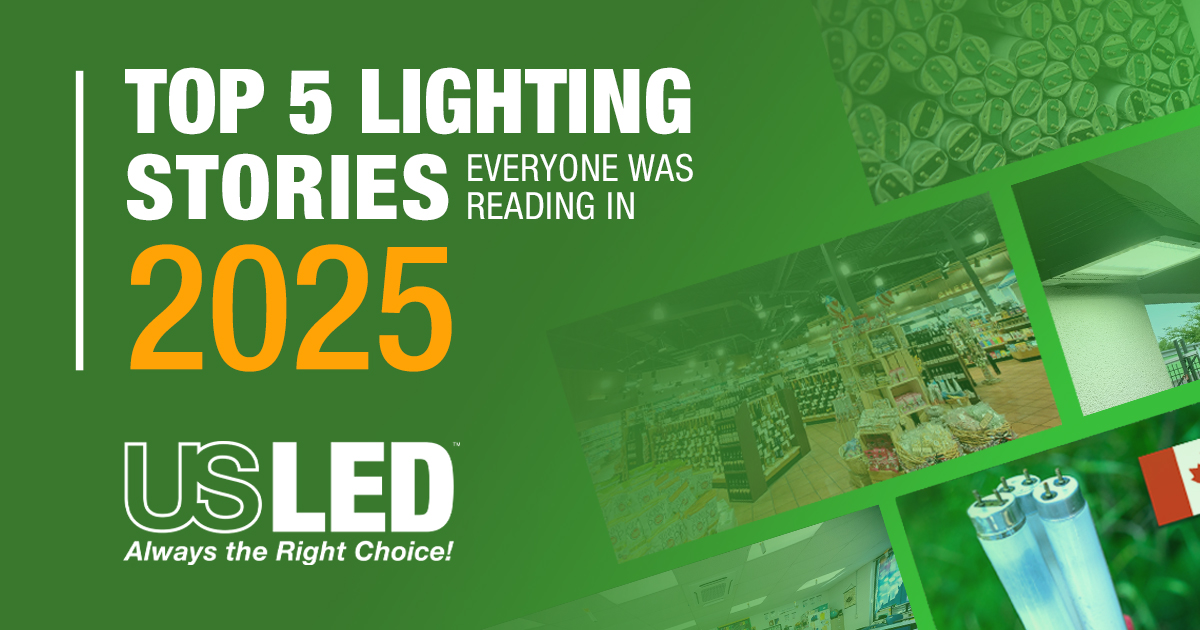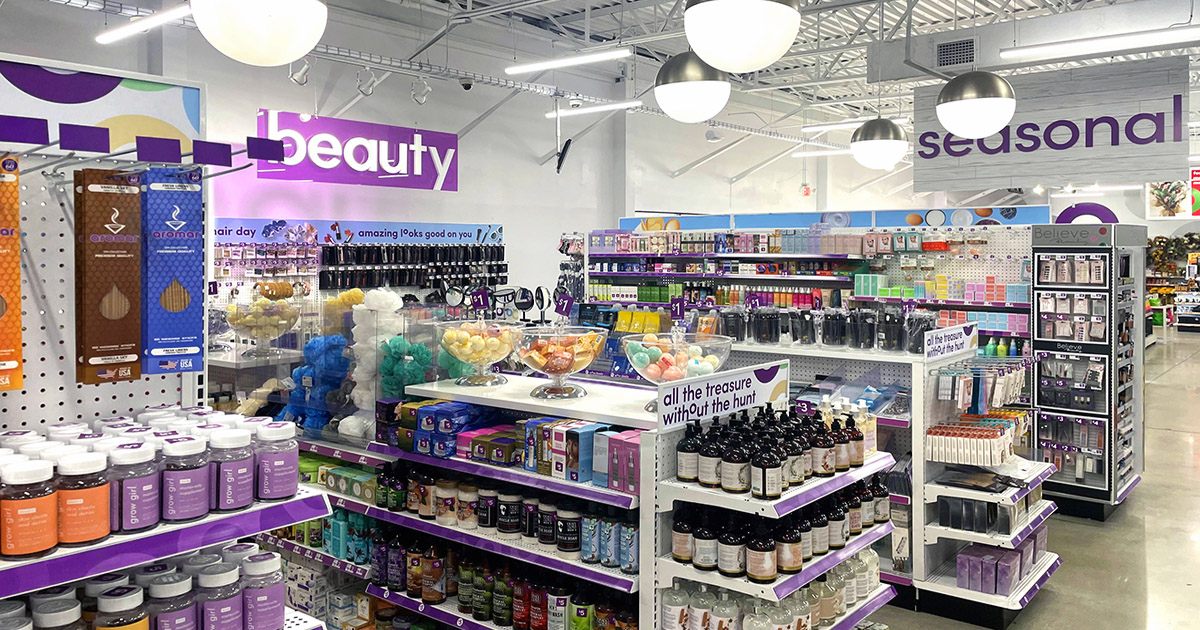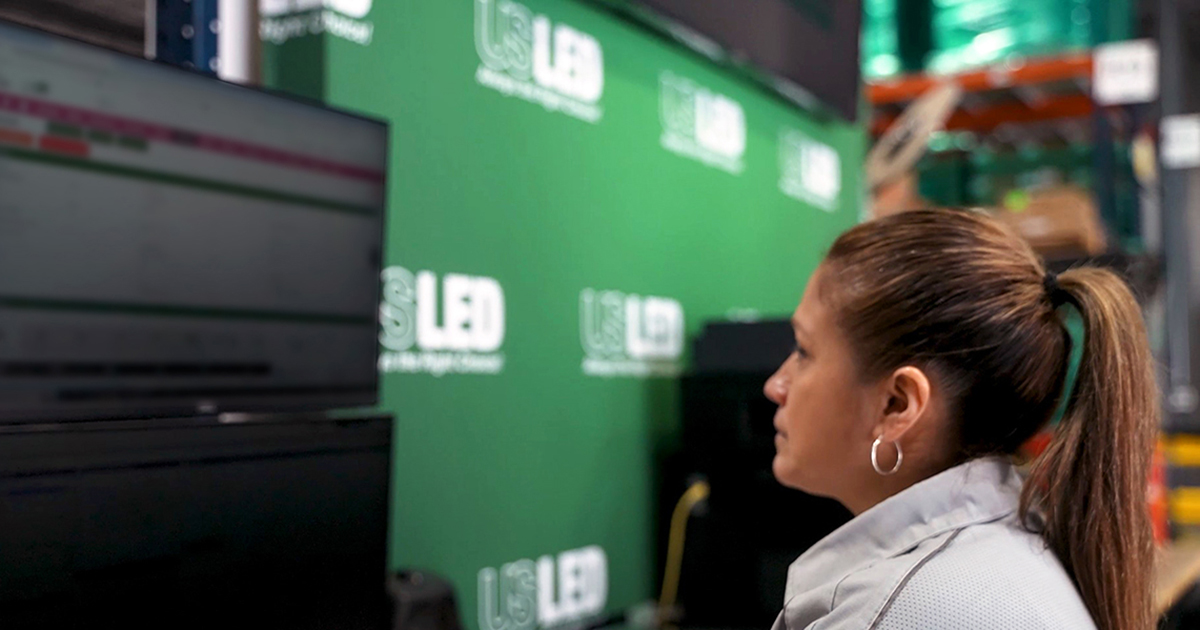With LED advancements on the horizon, 2025 is set to redefine what’s possible for commercial lighting. For business leaders, now’s the time to plan future upgrades that embrace the benefits.
As 2024 winds down, commercial LED lighting is evolving into crucial infrastructure for smarter, greener buildings in 2025. For commercial property owners and business leaders, keeping up with the latest advancements in lighting is vital for optimizing energy efficiency and improving the customer experience. Whether you oversee an office, retail space, or any other commercial property, here are some highlights and innovations to look out for in 2025 that will significantly impact your business and those who use your space.
Enhanced Selectable Features: Going Beyond Wattage and CCT
In 2025, LED technology will provide commercial property owners and businesses with enhanced customization options for their lighting. While adjustable wattage and Correlated Color Temperature (CCT) have become standard features in many commercial LED lights, recent advancements are introducing even more capabilities to meet the specific demands of various projects. This flexibility to adjust in the field makes LED technology highly effective for creating lighting environments tailored to occupants' needs by utilizing the same light sources in multiple ways.
With multiple selectable features in development, including adjustable optics and beam angles, businesses can immediately modify their environment's lighting. This capability accommodates different tasks and tailors the space for other uses without requiring comprehensive reinstallation. For example, retailers may adjust their lighting to highlight merchandise and essential areas. Warehouses could provide adequate illumination for aisles if moved without over-illuminating less critical areas. Hospitality and event venues could create different moods that enhance the guest experience.
AI-Powered LED Lighting: Smarter, More Efficient Commercial Spaces
New building controls powered by Artificial Intelligence (AI) transform commercial lighting by enabling systems to adapt automatically based on data processed by machine learning. In 2025, AI-driven lighting controls will become a bigger part of Operational Efficiency Solutions (OES), allowing property owners to automatically control lighting for energy efficiency and reduce costs while supporting occupants' needs. This type of AI-powered LED lighting is a forward-thinking investment in 2025, creating numerous benefits for applications like large office spaces, retail stores, hospitality, and industrial spaces like warehouses and distribution centers.
For example, interconnected systems like HVAC and lighting in a retail store can be controlled through an Energy Management System (EMS), enabling the collection and analysis of data through advanced meters and sensors. Managers can remotely monitor a single site or multiple locations’ environmental conditions, diagnose electrical and mechanical faults, and respond promptly, avoiding customer dissatisfaction and excessive maintenance expenses.
Wireless Lighting Control: Flexibility and Efficiency in Commercial Spaces
Wireless lighting control systems will continue to expand capabilities and transform commercial spaces by eliminating the need for extensive wiring. With this type of flexibility, property owners can easily install advanced lighting controls with their energy-efficient LED lighting. In 2025, we expect wireless lighting control systems to continue growing in popularity among offices, retail stores, and hospitality, especially spaces that need lighting controls installed with minimal disruption.
So, what makes this type of lighting control advantageous? Wireless lighting controls can be installed quickly at the luminaire level and controlled wirelessly through a centralized interface like an app. One example is Casambi, which has an ecosystem of wireless sensors and controllers that can be integrated with US LED lighting solutions. Its intuitive Bluetooth mesh network capabilities seamlessly connect everything into their app for easy commissioning. This type of wireless lighting control makes implementation cost-efficient and eliminates the need for additional cabling throughout a space.
Sustainable LED Lighting Remains A Focus
As sustainability becomes a priority across all sectors, commercial property owners are looking for energy efficiency projects that help support their organization's eco-friendly goals. In 2025, sustainable LED lighting options are becoming more advanced, assisting properties to lower carbon emissions and reduce their environmental impact. LED lighting is critical for organizations looking for green building certifications, like the USGBC LEED certification, for their properties.
The key benefits of sustainable LED lighting continue to be significant. Commercial LED lighting is far more energy efficient, using up to 75% less energy and having greater lifetimes that perform longer than legacy technologies. The latest LED lighting solutions are constructed from recyclable or low-impact materials and are free from toxic elements like mercury, further aligning with sustainable practices. This attribute is a major reason driving state-level legislation nationwide to ban fluorescent lighting.
Circadian Rhythm Lighting: Well-Being and Productivity
In 2025, circadian rhythm lighting will be pivotal in commercial environments, especially in office buildings and healthcare facilities. This type of lighting helps support occupant well-being and fosters employee productivity. As an advanced form of Human-Centric Lighting (HCL), circadian rhythm lighting is designed to mimic natural light cycles, adjusting brightness and color temperature throughout the day to align with human biological clocks. This type of lighting technology and control offers facility managers and owners a strategic way to create healthier, more productive spaces while differentiating their properties in the marketplace.
Why consider circadian rhythm lighting for commercial spaces? By aligning indoor lighting with natural daylight patterns, employees will have improved focus, reduced fatigue, and participate in an environment that fosters improved performance. In settings like retail and hospitality, lighting can create a more comfortable and inviting atmosphere, encouraging customers to linger and spend more time in their surroundings. For healthcare facilities, regular exposure to lighting that follows natural cycles can support better sleep patterns, reduce stress, and contribute to long-term health benefits that appeal to patients.
Embracing The Future of Commercial LED Lighting In 2025
With so many LED advancements on the horizon, 2025 is set to redefine what’s possible for commercial lighting. For property owners and business leaders, upgrading to LED lighting offers substantial benefits—from boosting productivity and enhancing customer experiences to maximizing energy savings and supporting sustainability goals. By planning an LED lighting upgrade now for 2025, businesses can stay ahead of the curve, creating environments that are efficient, engaging, and healthier for everyone who uses them.
To take full advantage of these innovations and see how they can transform your property, contact the lighting experts at US LED. The team can conduct an on-site lighting audit of your facility, identify the best solutions to meet your goals, and provide turnkey commercial lighting installation that’s nondisruptive to operations. Don’t wait—contact US LED today and let us help you light the path to success in 2025 and beyond.











